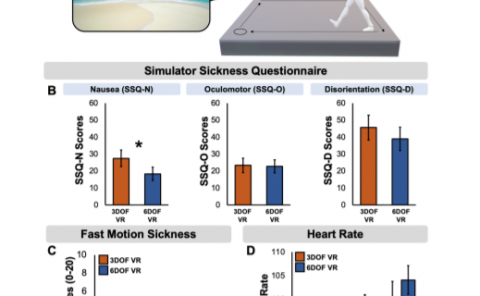Exploring Users’ Pointing Performance on Virtual and Physical Large Curved Displays
PubDate: Oct 2023
Teams: University of British Columbia;Univ. Bordeaux
Writers: A K M Amanat Ullah, William Delamare, Khalad Hasan
PDF: Exploring Users’ Pointing Performance on Virtual and Physical Large Curved Displays

Abstract
Large curved displays have emerged as a powerful platform for collaboration, data visualization, and entertainment. These displays provide highly immersive experiences, a wider field of view, and higher satisfaction levels. Yet, large curved displays are not commonly available due to their high costs. With the recent advancement of Head Mounted Displays (HMDs), large curved displays can be simulated in Virtual Reality (VR) with minimal cost and space requirements. However, to consider the virtual display as an alternative to the physical display, it is necessary to uncover user performance differences (e.g., pointing speed and accuracy) between these two platforms. In this paper, we explored users’ pointing performance on both physical and virtual large curved displays. Specifically, with two studies, we investigate users’ performance between the two platforms for standard pointing factors such as target width, target amplitude as well as users’ position relative to the screen. Results from user studies reveal no significant difference in pointing performance between the two platforms when users are located at the same position relative to the screen. In addition, we observe users’ pointing performance improves when they are located at the center of a semi-circular display compared to off-centered positions. We conclude by outlining design implications for pointing on large curved virtual displays. These findings show that large curved virtual displays are a viable alternative to physical displays for pointing tasks.

